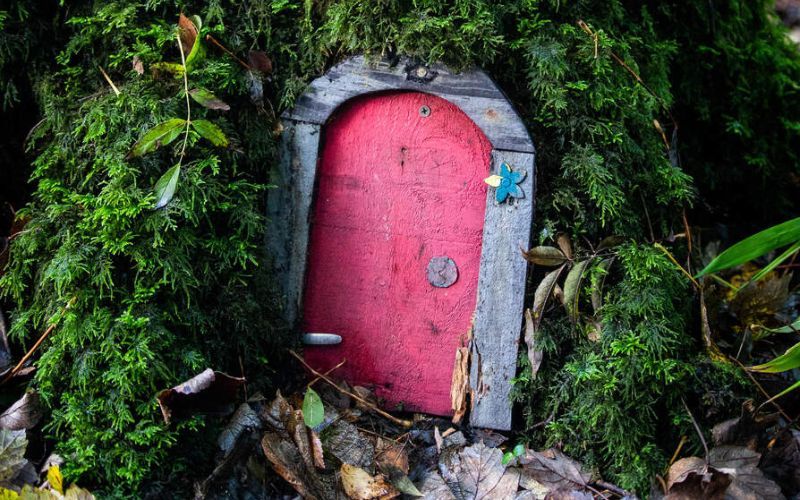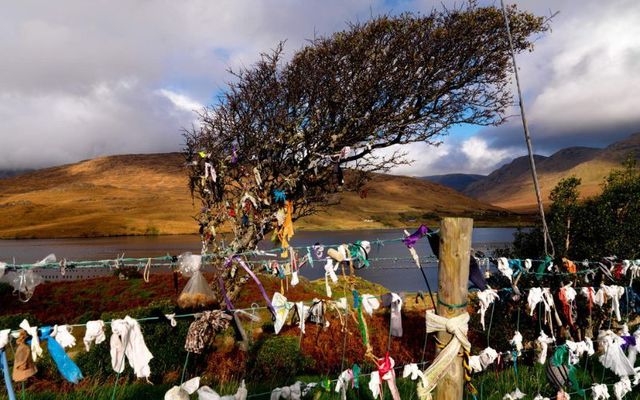What you need to know about Ireland's fairy trees.
In May, the countryside of Ireland is bursting with white sweet smelling Hawthorn blossom - mile upon mile of hedgerow delineating stone walled boundaries are glowing with an intense efflorescence worthy of an artist’s palette, fittingly, the Irish for hawthorn is “sceach gheal”, meaning radiant briar.
A tree, normally a hawthorn or very occasionally ash, standing alone sentinel in a stone-walled field surrounded by cows or sheep is a common sight in Ireland that could almost be considered iconic.
Hawthorn trees are still treated with immense respect and reverence – so much so that roads have been re-routed and it is rumored powerful men have fallen and misfortune courted when ancient lore has been flouted.
Fairy Door, Strokestown, Co Roscommon_Tourism Ireland
Hawthorn spring blossoms herald the arrival of summer and because this coincides with the ancient festival of Bealtaine, now celebrated as May Day. The hawthorn was imbued with sacred significance and became a focal point for our ancient forebears.
Bealtaine was a most auspicious time for our Stone Age and pre-Christian ancestors as it occurred halfway between the Spring Equinox and the Summer Solstice, exactly six months away from Samhain- The Celtic New Year on November 1.
In Ireland, the Hawthorn is synonymous with the ‘Sidhe’ or Fairies and farmers will normally exercise the greatest of care, working around the lone tree to ensure that it is not desecrated. From the times of the druids, the tree was highly valued as a source of medicinal remedies - the flowers, leaves, and berries were used to treat conditions of the heart, and lower blood pressure. The bright red berries or haws are a good source of vitamin C and can be mixed with flour to produce a nutritious bread.
Certain hawthorn trees especially those associated with Holy Wells have become “Rag Trees” or “Wishing Trees”. Originally cloth strips taken from the clothing of a sick person were tied to the branches of the tree as a petition to a local saint or deity. As the cloth rotted, the theory goes so did the sickness. Unfortunately, in modern times sometimes plastics and unbiodegradable materials have replaced the original cloth rags posing environmental issues.
In 1954, it was reported that residents of a housing estate in Garavouge, Sligo, were concerned that a pishogue or spell had been cast on the community after the tragic deaths of three young men following the removal of a lone hawthorn tree by a local parish priest who had replaced the ancient tree with a crucifixion tableau.
In 1990, Clare County Council and the national roads authority acquiesced to the wishes of locals, led by folklorist Eddie Lenihan and agreed to re-route the Ennis by-pass away from a sacred hawthorn, which was reputed to be a traditional rallying point for the fairies of Munster before their battles with their enemy the fairies of Connacht.
The car manufacturer DeLorean failed to heed the protestations of local workmen when rather spectacularly Chairman John DeLorean himself bulldozed a lone hawthorn tree to facilitate the building of his ill-fated luxury car plant at Dunmarry, near Belfast.
* Originally published in 2019. Updated in 2024.
This article was submitted to the IrishCentral contributors network by a member of the global Irish community. To become an IrishCentral contributor click here.




Comments